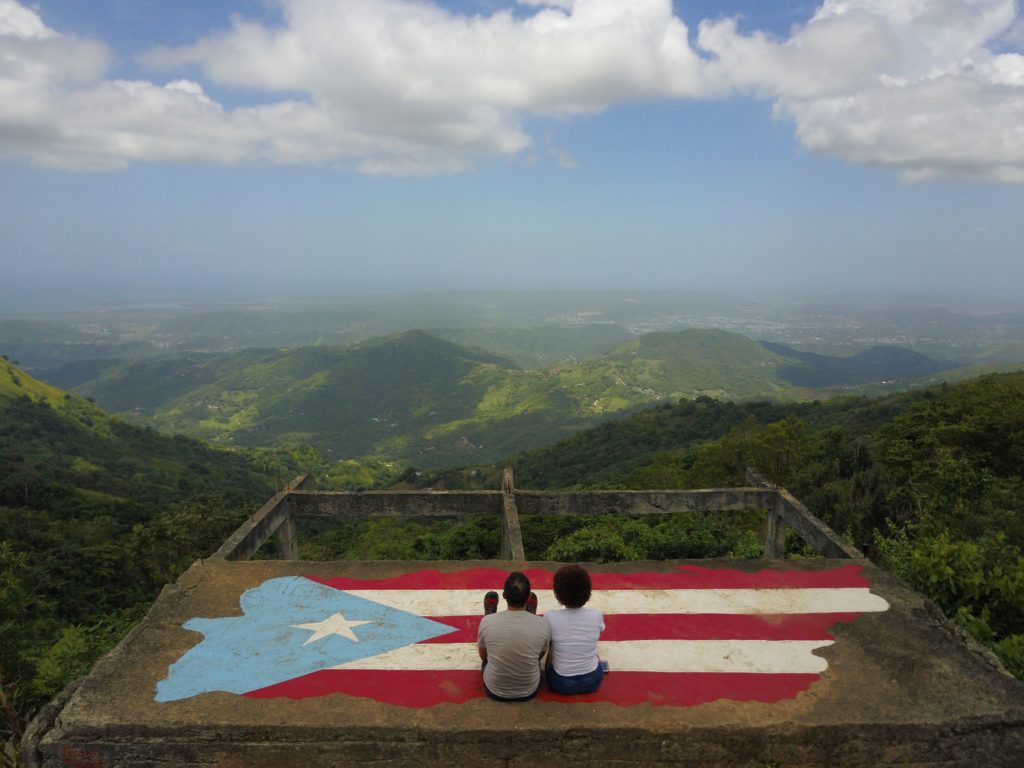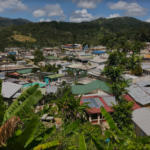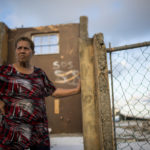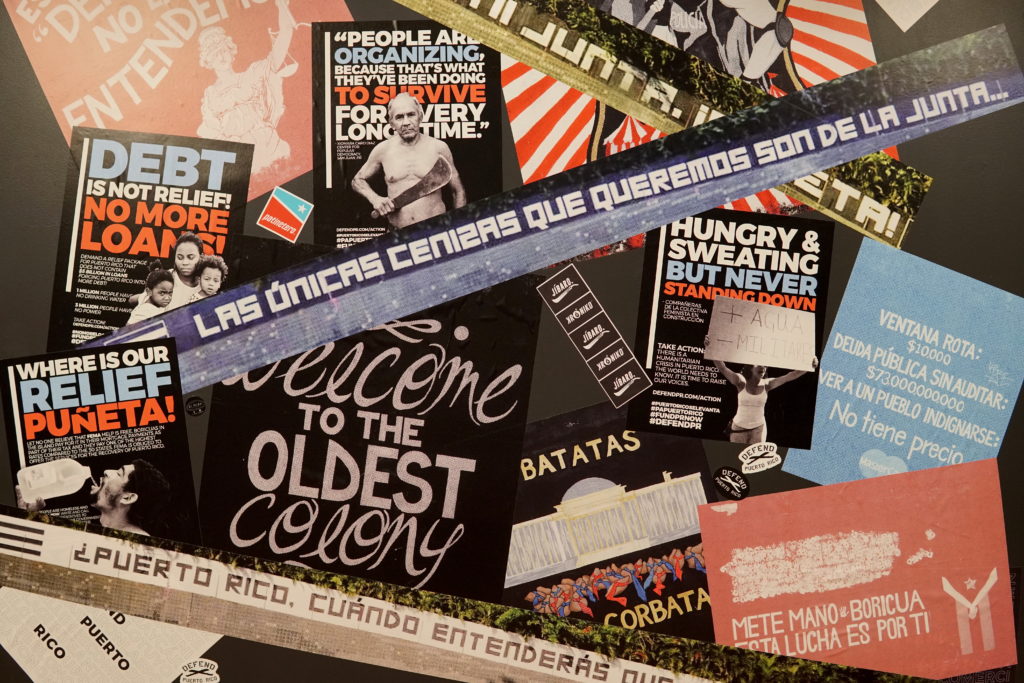
“Diseño en Resistencia”- Wallpaper collage including photos of public art walls in Puerto Rico and political poster designs. Photo courtesy of CCCADI & Defend PR
In 2016, filmmaker Eli Jacobs-Fantauzzi decided to go to Puerto Rico to reconnect with his family and understand the island’s financial crisis. When he returned to California, he felt that the Puerto Rican diaspora wasn’t hearing the stories of those he met – the entrepreneurs, activists, and community leaders working to defend the island, its culture, and its people.
Jacobs-Fantauzzi co-founded Defend PR, a multimedia project aimed at amplifying the voices of Puerto Rico’s communities and movements at the time. A year later, when Hurricane Maria hit, his role shifted. As part of the Rebuild Comerío project, Jacobs-Fantauzzi partnered with local artist Edgardo Larregui Rodriguez to help rebuild Comerío, a town in the center of the island, rallying support from the community as well as members of the diaspora. Jacobs-Fantauzzi’s work was part of the Defend Puerto Rico transmedia exhibition at the Caribbean Cultural Center African Diaspora Institute, in Harlem, New York.
This conversation has been edited for clarity and length.
What inspired you to create the Defend PR project in 2016?
The Defend Puerto Rico project started because being part of the diaspora and living in California, I felt disconnected to the island and what was happening. I was hearing a lot of statistics, seeing a lot of pie graphs and numbers about the debt, about people leaving, and I wanted to go back and reconnect with my family, reconnect with the island, and see for myself what was happening. When I got back here I saw that other people needed that information, so then we started this project.
Did the project’s mission change after Hurricane Maria?
I think the project’s mission has been the same after Hurricane Maria — the mission being, to let people know about what’s happening on the island from the voice of the people. But my role in Puerto Rico changed. I got to put down the camera and help rebuild, initially to help get people food and water, and later to re-paint houses, take out all the rubbish from the hurricane, and start building roofs. So I think the mission is the same, but we were able to tap into our resources to help rebuild.
How have Puerto Rican artists contributed to the recovery efforts post-Hurricane Maria?
I think Puerto Rican artists have done an amazing job of stepping in where the government failed. We all saw the incapacity, the bureaucracy, and the unwillingness of the local government and federal government to do what they’re supposed to do, to be a safety net. So artists on the island really stepped up, and artists in the diaspora too. I know fine artists that were painting, documenting what was happening on the island, and people like ‘Chemi’ who’s doing amazing work rebuilding ‘El Cerro’ [a community in the center of the island]. So I’m inspired not only by the work [but also their efforts] to amplify what’s happening, because so many people just wanted to know what was happening in Puerto Rico and couldn’t even get that information.
What issues do you think are underreported in the mainstream media, in terms of what the island and its people are currently facing?
The problem with the mainstream media is that it’s like a flock of information after the hurricane. It was moved just for a little amount of time.
What they’re willing to talk about is drift and destruction, but they don’t talk about the destruction being connected to colonialism, which is so obvious. On May 1st they’ll talk about the rebellion and people up against the police, but they won’t talk about why, they won’t talk about the Fiscal Control Board doubling the price of the university credit for students. They don’t talk about why the government won’t audit the debt. We want to know where the money was spent, [and] who got it. They don’t talk about the poverty rate that is at 45 percent and they believe is crawling up to 60 percent. The unemployment — they’re not talking about that, and the larger issues that Puerto Ricans are facing daily. And on the other side, the amazing work that Puerto Ricans are doing, like Rebuild Comerío, like [the artist] Chemi, and the other work that Puerto Ricans are doing in the face of this harsh reality. We are creating amazing projects of sustainability and what we call a just recovery, a just transition.
The Rebuild Comerío project is one of Defend PR’s post-hurricane projects. What’s the progress on that? How are the families doing?
The project in Comerío has been amazing. The community has really come together. The young folks are working daily to change the reality and transform the community. What we’ve been able to do is to help them get the resources to be able to do that. So really soon after we landed there we started the crowdfunding campaign, to raise money for them, and that was very successful. We also had contacts to different funds and organizations who’ve been donating and coming out and working with us on Fridays for the work brigade.
Visually, the community has been transformed, and I think it’s even more heartwarming to see, individually, people transform their lives. We were able to take them [community leaders] to New York City when we opened the exhibit, and we were able to bring about nine people to Washington D.C. It was six months after the hurricane, and they stood up in the senator’s office building, and they were doing a human microphone making the people listen to what was happening in their lives and in their community. It was a really powerful moment.
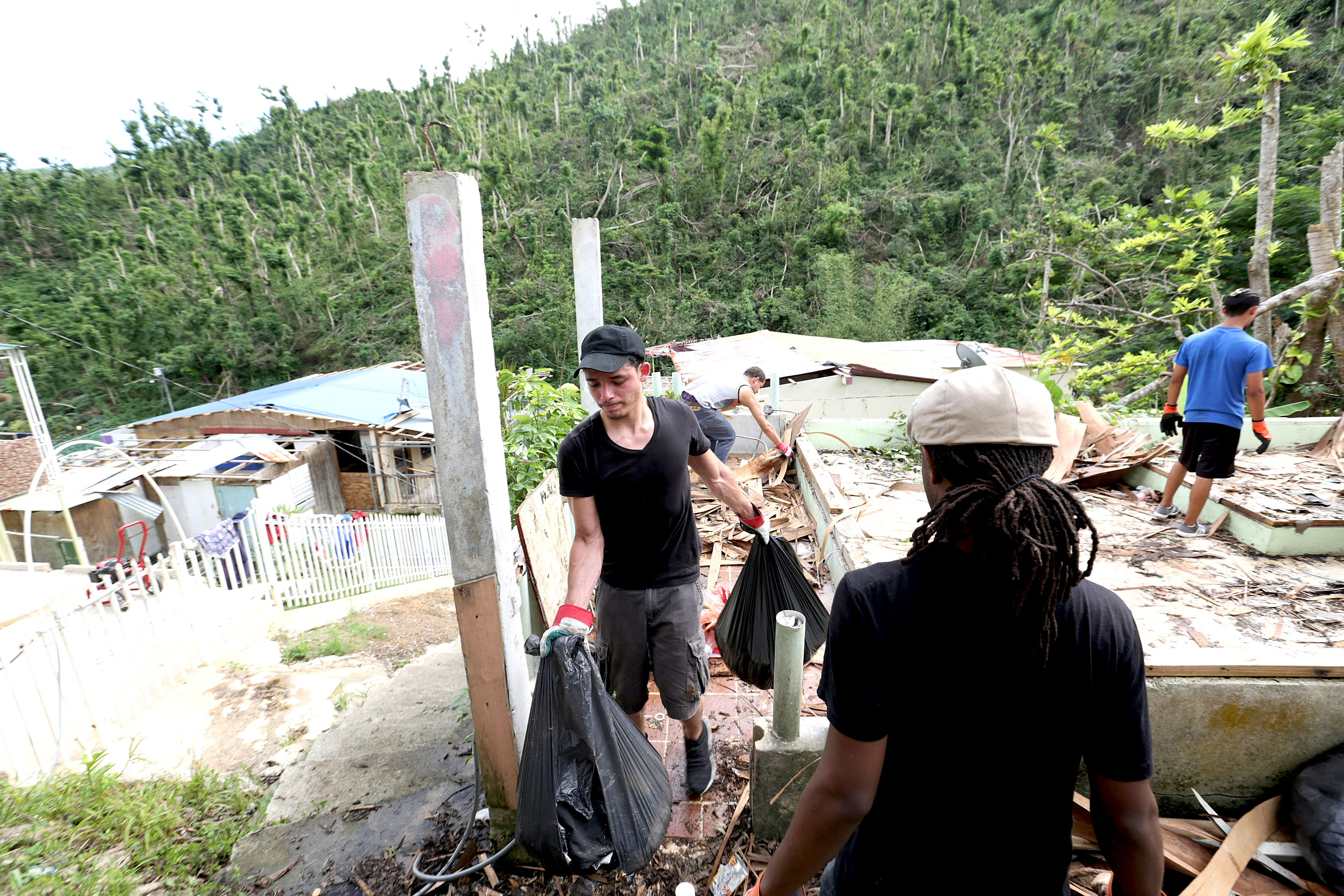
‘The work brigade’ for Rebuild Comerío project; photo courtesy of DefendPR
How is the Rebuild Comerío project different from other rebuilding efforts?
I think after Hurricane Maria we all saw that the regular aid and donation method doesn’t work, it’s not the way to go forward. The way to move forward is to connect with the leaders of that community, give them the resources they need to rebuild, and help them envision what they want their future to be, and help that become a reality. That’s what we’ve been able to do with rebuild Comerío. And the reason why we’ve been able to do it is because we’ve linked up with amazing organizations like Coco de Oro, who’s been doing community work on the island for over 20 years and La Maraña, whose specific vision is to help the community come up with the plan themselves.
What have you learned about the island in the past two years, since Defend PR started?
I’ve been able to meet and help amplify the voices of so many different struggles happening in Puerto Rico. From Playuela — they are protecting the land from being bulldozed and selling off our beach-side; to Peñuelas, where they’re dumping toxic ash, and the elders of the community are stopping the trucks from coming in and putting their lives on the line. There are groups like “Se Acabaron Las Promesas” that are out on the street demanding more from the government. It’s inspiring to see people willing to put their lives on the line and protect their community. It’s an honor to be embraced and to be able to do the work that we’re doing.
What message would you like to send to Puerto Ricans in the diaspora?
First, I would like to thank them for the amazing work that they did after Hurricane Maria. The diaspora really came through in a way that I’ve never seen before. People really organized, came here, and made things happen. I want to say: Let’s not lose that connection. We all, as in the Puerto Rican diaspora, we all have a role to play, and the island needs our help right now, so let’s see how we all fit in. We are all different pieces of the puzzle.
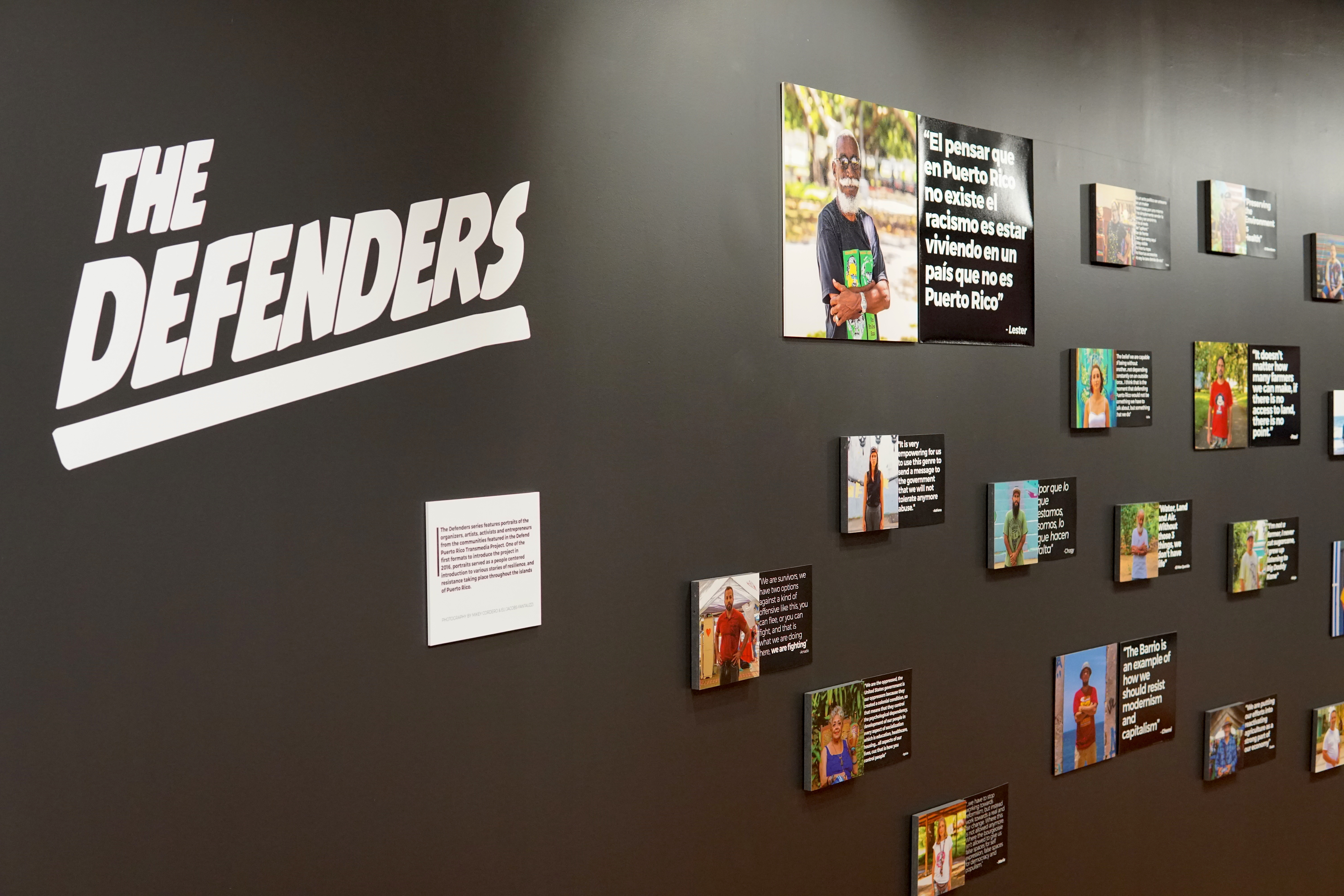
‘The Defenders Wall’ – Defend Puerto Rico exhibition; photo courtesy of CCCADI & Defend PR
How do you envision Puerto Rico’s future?
I envision an island where we have the right to self-determination, where we can determine our own future, where we know our neighbors, [where] it doesn’t take a hurricane for us to know our neighbors, our community. That we decentralize the government. Locally we have the power to create the future that we want, to live and love, and live in paradise, because Puerto Rico is paradise.
Fi2W is supported by the David and Katherine Moore Family Foundation, the Ralph E. Odgen Foundation, the J.M. Kaplan Fund, an anonymous donor and readers like you.


